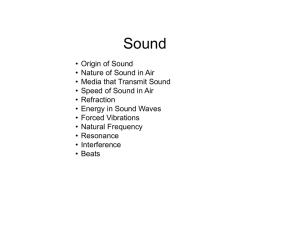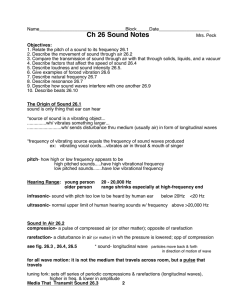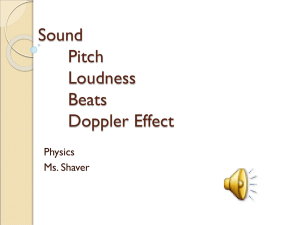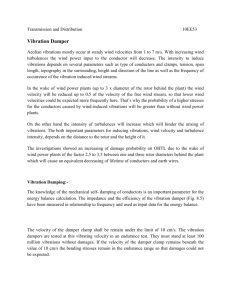Chapter 26 -- Sound Compare sound vibrations to shaking a paddle
advertisement
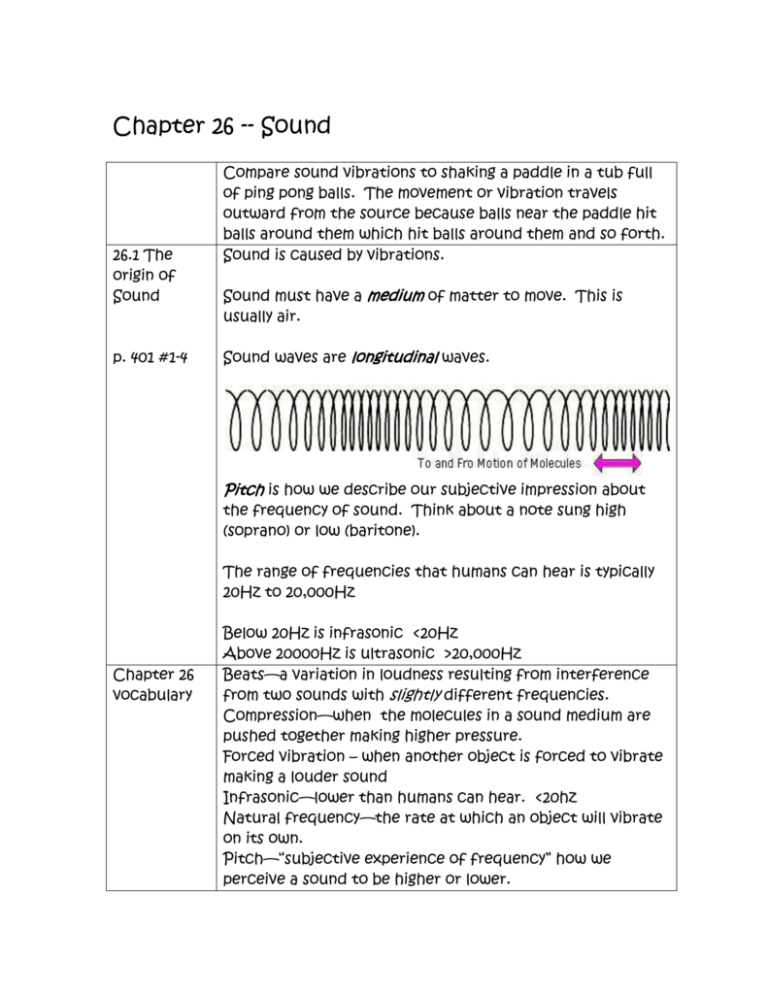
Chapter 26 -- Sound 26.1 The origin of Sound p. 401 #1-4 Compare sound vibrations to shaking a paddle in a tub full of ping pong balls. The movement or vibration travels outward from the source because balls near the paddle hit balls around them which hit balls around them and so forth. Sound is caused by vibrations. Sound must have a medium of matter to move. This is usually air. Sound waves are longitudinal waves. Pitch is how we describe our subjective impression about the frequency of sound. Think about a note sung high (soprano) or low (baritone). The range of frequencies that humans can hear is typically 20Hz to 20,000Hz Chapter 26 vocabulary Below 20Hz is infrasonic <20Hz Above 20000Hz is ultrasonic >20,000Hz Beats—a variation in loudness resulting from interference from two sounds with slightly different frequencies. Compression—when the molecules in a sound medium are pushed together making higher pressure. Forced vibration – when another object is forced to vibrate making a louder sound Infrasonic—lower than humans can hear. <20hz Natural frequency—the rate at which an object will vibrate on its own. Pitch—“subjective experience of frequency” how we perceive a sound to be higher or lower. Rarefaction – opposite of a compression. An area of low pressure in a longitudinal wave. Resonance—when an object is forced to vibrate at its natural frequency. Ultrasonic – higher frequencies than humans can hear. >20,000 Elastic (26.4) – the ability to resume its original shape quickly Decibels (26.5) – unit for measuring the loudness of a sound -- the intensity or energy in a sound. 26.2 Sound in Pulses from sound vibrations cause compressions and Air rarefactions in air. Compressions have higher pressure & rarefactions have lower pressure. figure 26.5 Medium does not travel. Think a “wave” at a football game. p. 401 #5 26.3 Media “ear to the ground” we can hear sound faster. Also, in that water, sound travels faster – we can hear under water. Transmit Sound p. 401 #6 Generally sound moves faster in solids and liquids than in air. This is because the molecules are closer together and the materials are more “elastic” -- that is in the scientific meaning 26.4 Speed of Sound p. 401 #7-9 working the No medium—no sound Light travels much faster than sound 1200km/hr or 330m/s at 0°C. At room temp, sound typically travels 340m/s track meet— watch for Sound speed depends on elasticity. By elastic, scientist smoke from mean the ability of a material to return to its original shape the starter’s after a distortion. pistol – not sound 26.5 Loudness 26.6 Forced Vibation p. 401 #10 26.7 Natural Frequency. p. 402 #11-12 26.8 Resonance p. 402 #13-16 Loudness can be measured by scientific instruments as intensity. How different people perceive loudness is subjective but related to intensity. Sound intensity is measured in decibels (this is named after Alexander Graham Bell). The decibel scale is logarithmic, so a sound of 70 decibels is 1000 times more intense than a sound of 40 dB. A tuning fork held to a table makes a louder sound because the table acts as a “sounding board.” This is called forced vibration and is the principal behind all stringed instruments such as guitars, pianos and violins. The surface that is vibrating is larger, so the sound is louder – more air is being moved. Any object will vibrate at its own frequency based on the elasticity and shape of the object. Think different shaped handbells. **”a natural frequency is one at which minimum energy is required to produce forced vibrations.” P. 395 and the least energy to continue vibrating. Resonance – when frequency of a forced vibration matches the object’s natural frequency. “Resonance means to sound and resound again.” Two tuning forks tuned to the same frequency. Strike one and it will make the other vibrate. This is because the compressions in the air resonate with the frequency of the second tuning fork. Through history resonance has cause bridge collapses and makes “washboard” roads. 26.9 Interference Interference can increase amplitude or decrease (cancel) amplitude depending on where two waves overlap. p. 402 #17-18 Interference can affect the loudness of sounds 26.10 Beats p. 402 #19-20 Interference is the physics principle that allows for noisecancelling headphones. They produce “anti-noise” waves that interfere with other sound waves. When two sounds are at slightly different frequencies, there is a fluctuation in the loudness. This can be seen when you sing into a fan. Two tuning forks with a similar pitches will produce this effect as well. This variation or fluctuation in loudness is called beats. When the wavelengths are “in-phase” the sound is louder. When the wavelengths are “out of phase” there is destructive interference and the sound is softer. This could be compared to two people walking together with different strides – sometimes they will be in step, but sometimes out of step. Two combs can be used to show the interference of waves producing beats. The beat from interference will have its own frequency because it will follow a repetitious pattern. Vocabulary on Sound Beats: a throbbing variation in the loudness of sound caused by interference when two tones of slightly different frequencies are sounded together. Compression: a pulse of compressed air; the opposite of a rarefaction Forced vibration: the vibration of an object that is made to vibrate by another vibrating object that is nearby. The sounding board in a musical instrument amplifies the sound through forced vibration. Infrasonic: term applied to sound pitch too low to be heard by the human ear, that is below 20 hertz Natural frequency: a frequency at which an elastic object, once energized, will vibrate. Minimum energy is required to continue vibration at that frequency. Also called the resonant frequency. Pitch: term that refers to how high or low sound frequencies appear to be. Rarefaction: a disturbance in air (or matter) in which pressure is lowered. Opposite of compression. Resonance: a phenomenon that occurs when the frequency of forced vibrations on an object matches the object’s natural frequency, and a dramatic increase in amplitude results. Ultrasonic: Term applied to sound frequencies above 20, 000 hertz, the normal upper limit of human hearing.
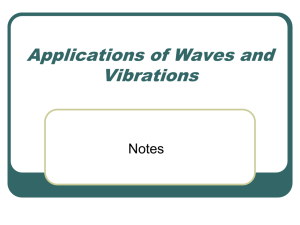

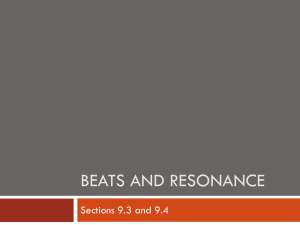
![Exam questions – vectors and scalars [2003] Give the difference](http://s3.studylib.net/store/data/006789108_1-b4c7cf381070a8ab953d1ceeab9e379f-300x300.png)



